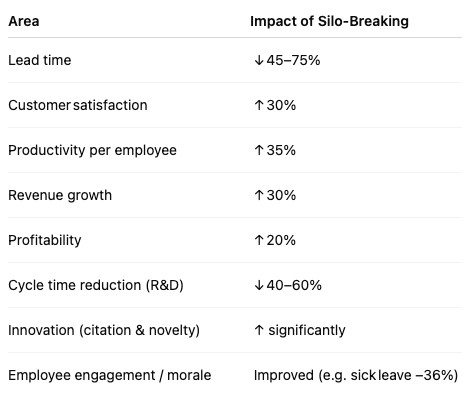ஃ
Enterprise Design Philosophy
ஃ
Design philosophy serves as a guiding compass in a field full of choices, trade-offs, and competing priorities. It anchors decisions, ensuring that design is meaningful and intentional. I have written my own enterprise design philosophy to shape solutions that, not only solve functional needs, but also respect the realities of scale, complexity, and the diverse capabilities of their users. It helps me stay focused on clarity, empathy, and long-term impact—especially in environments where simplicity is hard-earned and often overlooked.


DESIGN FOR 'EQUITY'
PRINCIPLE 1
2. The Average Belt
Majority of the population lives on the ‘Average Belt’. They interact with systems designed by organisations with average budget. These ‘Average’ organisations often face challenges to buy premium‑tagged solutions and have their workforce go through training to learn these top‑tier systems.
1. Big Fish, Bigger Budgets
Its natural for businesses to be focused on organisations with deep pockets. These ‘large’ organisations can afford top‑tier systems and expert talent because these systems promise immediate RoI.
3. Hitting the Barrier
At some point, average organisations are unable to afford these top‑tier systems and this creates a ‘Barrier’. At this barrier, businesses often lose interest and they stop innovating for these average organisations.
“Business lose interest in average organisations not because of money, but because they can’t make their complex systems simple enough.”
4. Untapped Opportunity
There is a large untapped market of average organisations that needs good enterprise solutions. To tap into this market, a business must understand that their solutions will be used by a diverse set of people with different skill levels, backgrounds, geographies, abilities.
5. Why Design for Equity?
An operator may not have all the knowledge an engineer possesses. Should they end up using the same solution? This is why “Design for Equity” matters and it can empower businesses. Only by treating their customers and users equally and truly understanding who they are, can they design a solution which succeeds in this untapped market.
6. Recognise, diagnose, and recover
UX Processes can help any business recognise whether they are ready to serve customers in these untapped market and their solutions are easy enough for an average worker.
Once recognised, UX Processes can help businesses with building 'True Digital Equity'.
Studies focused on SMEs and mid‑market firms show these make up the majority of businesses globally, operating with modest budgets and IT capacity.
These firms typically prioritize core functionality rather than full-suite tools, due to resource constraints
Reference
PRINCIPLE 2
DESIGN FOR 'TRANSPARENCY'
1. Customers hate silos !
When customers are interacting with any business, the one thing that they hate is how their departments are disconnected and live in their own parallel universes.
This makes it difficult for them to communicate the same information multiple time to these silos.
2. Silos kill organisations
Silos—whether built around data, knowledge, incentives, or culture—erode collaboration, efficiency, decision quality, and innovation.
They significantly increase operating costs, slow down strategic responsiveness, and pose tangible risks to customer trust and compliance. Breaking them down is essential not just for competitiveness, but for business sustainability and growth.
“In a survey of large organisations, 97% of respondents said silos had a negative effect on performance”
Reference
3. Can breaking Silos help businesses grow?
Strategically dismantling silos—or realigning incentives, metrics, culture, and communication across functional boundaries—consistently drives faster delivery, higher innovation, increased employee effectiveness, and stronger financial performance.
Multiple researches show the following data:
4. How can Transparency help in silo-breaking?
Open access to shared dashboards, and real‑time metrics ensures that teams KNOW who owns which piece of the puzzle and how their work impacts others. This visibility breaks down mistrust and secret-keeping, aligns everyone on common goals, and naturally dissolves silos, because when processes and data are fully exposed, collaboration becomes the only path forward.
Transparency sits at the heart of service design by making every process, decision, and handoff visible to both customers and colleagues. When teams openly share journey maps, service blueprints, performance metrics, and even failures, everyone gains a clear understanding of how each interaction contributes to the overall experience. This clarity builds trust, reduces hidden handoffs or surprises, and empowers continuous improvement—because you can’t fix what you can’t see.
Service design inherently “kills” silos by shifting the focus from isolated tasks or departments to a seamless end‑to‑end experience.
By mapping the entire customer journey service designers create a shared blueprint that:
Breaks Down Departmental Boundaries
Every team (marketing, support, operations, IT) sees where their handoff sits in the bigger picture, so decisions are made for the whole service rather than individual functions.Builds a Single Source of Truth
Service blueprints and journey maps become living documents that all stakeholders refer to—no more “I didn’t know you needed that” or competing internal roadmaps.Fosters Cross‑Functional Collaboration
Co‑creation workshops bring people from all levels and areas into the same room (or virtual whiteboard) to solve problems together, creating mutual empathy and shared ownership.Aligns Metrics Around Outcomes
Instead of each silo optimizing its own KPI, service design drives everyone toward customer‑centered outcomes—reducing finger‑pointing and rewarding collective success.
When you design around the service rather than the org chart, silos naturally dissolve—and the organization delivers faster, more coherent, and more human experiences.


References


”I believe that putting equity and transparency into how we design enterprise solutions can truly benefit a business. When we’re open and fair, people trust us more—which means happier customers, fewer mistakes, and better financial results.”
- Swamitra Singh
Explore my portfolio
Connect
swamitra@live.in
+91-725-980-9055
© 2025. All rights reserved.